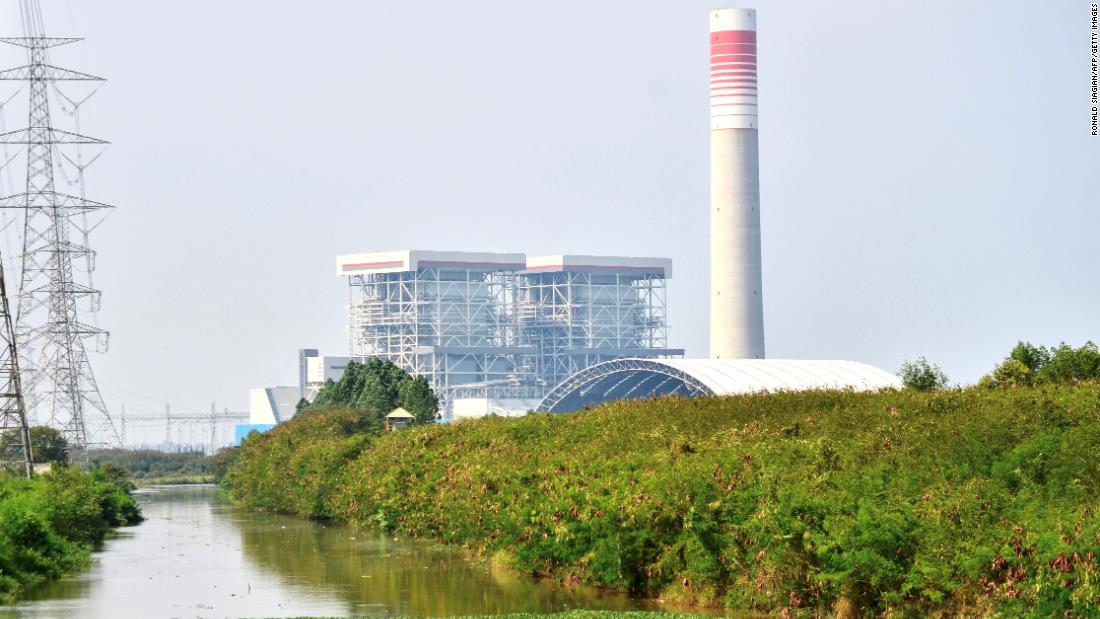
The Climate Action Tracker (CAT) monitor analyzed the policies of 36 countries, as well as the European Union of 27 countries, and found that all major economies were off track to contain global warming at 1.5 degrees Celsius above pre-industrial levels. Countries together account for 80% of global emissions.
The analysis also included some low-emission countries and found that Gambia was the only nation among the 37 that was “1.5 compatible”. Because the study only included a few smaller issuers, there may be other developing countries in the world as well.
Under the 2015 Paris agreement, more than 190 countries agreed to limit the rise in global temperatures to well below 2 degrees above pre-industrial temperatures, ideally to 1.5 degrees. Scientists have said that the 2 degrees are a critical threshold for some of the Earth’s ecosystems and would also cause more catastrophic extreme weather events.
The report is less than two months ahead of the UN-signed international climate talks in Glasgow, known as COP26. The chairman of the event, British MP Alok Sharma, has said he hopes to “keep 1.5 alive” as a global warming limit.
“In May, after the Petersburg Summit on Climate Leaders and Dialogue, we reported that there seemed to be a good boost with the new climate action commitments,” said Niklas Höhne, founding partner of the NewClimate Institute, a partner at CAT.
“But since then, there has been little or no improvement: nothing moves,” he said. “Anyone would think they have all the time in the world, when in fact it’s the opposite.”
Six countries, including the UK, have a global climate policy that is “almost sufficient,” according to the report, meaning they are not yet consistent with the 1.5-degree alignment, but could be with small improvements. The UK targets match 1.5 degrees, but its policies in practice do not meet the benchmarks.
CAT had previously classified the US as “critically inadequate”, the worst category, under former President Donald Trump, who formally withdrew the country from the Paris Agreement shortly before the end of his term.
Since then, the U.S. national emission reduction target has been upgraded to “almost enough.” However, the U.S. is still insufficient in CAT’s “fair share” target rating, which takes into account the country’s “responsibility and capacity”.
Under the Paris agreement, countries presented their commitments to reduce emissions, also known as nationally determined contributions or NDCs. All signatories had to update their NDCs before July 31 this year under the Paris agreement. There are still more than 70 countries that have not yet submitted any updates.
India, Saudi Arabia and Turkey are some of the countries that have not met the July 31 deadline. China, the world’s largest polluter, announced a new target, but has not formally presented it to the UN.
And many countries introduced an “upgrade” without increasing their promise. Brazil and Mexico presented the same targets as in 2015. Changes in the basic assumptions of these countries make their promises weaker than before, according to the analysis. Russia, according to the CAT report, introduced an update that seems stronger on paper, but does not mean a significant change.
According to the report, the continued use of coal remains a major political issue, as China and India retain huge coal pipelines. Indonesia, Vietnam, Japan and South Korea also plan to move forward with coal use in the future.
CAT also warned that in attempts by many countries to wean coal, which are generally the fossil fuels that cause the most emissions, many countries sought to use more natural gas, which CAT said was falsely sold as “bridge fuel. “.
The Australian government, which has said it will keep coal mining past 2030, is also investing money in new infrastructure and gas exploration and is “particularly concerned,” CAT said in its report.
Thailand plans to increase new gas as it removes coal, while the EU continues to plan to contract public funding for the new gas infrastructure and several member states are pushing hard to continue using this fossil fuel.
Hare warned against the development of blue hydrogen, based on natural gas, as an alternative to other fossil fuels.
“Gas is a fossil fuel and any investment in gas currently runs the risk of becoming a blocked asset. And while interest in green hydrogen has grown exponentially, there are still a large number of projects. of hydrogen in the pipeline where it is produced from gas, ”Hare said. . “Hydrogen produced from gas still produces carbon and is incompatible with reaching net zero.”
Net zero for 2050
Emission reduction is a non-negotiable part of the Paris Agreement. Carbon dioxide and other greenhouse gases trap solar radiation into the atmosphere, just as glass traps the heat of a greenhouse. This causes a rise in temperatures and causes more extreme weather, melting ice, rising sea levels and acidification of the ocean.
Net zero refers to a state in which the amount of greenhouse gases emitted does not exceed the amount removed from the atmosphere.
According to the UN climate change, so far just over 130 countries have committed to reducing emissions to zero. The new CAT analysis found that even if everyone followed their plans, the warming would still reach 2 degrees.
If they adhere to established policies, temperatures are likely to be 2.4 degrees higher by the end of the century.
“A growing number of people around the world are suffering from increasingly severe and frequent impacts of climate change, although government action continues to lag behind what is needed,” said Bill Hare, CEO of the Climate Analytics think tank. and another author of the analysis.
While many governments have opted for net zero, Hare said that without real action soon, achieving net zero will be “virtually impossible.”